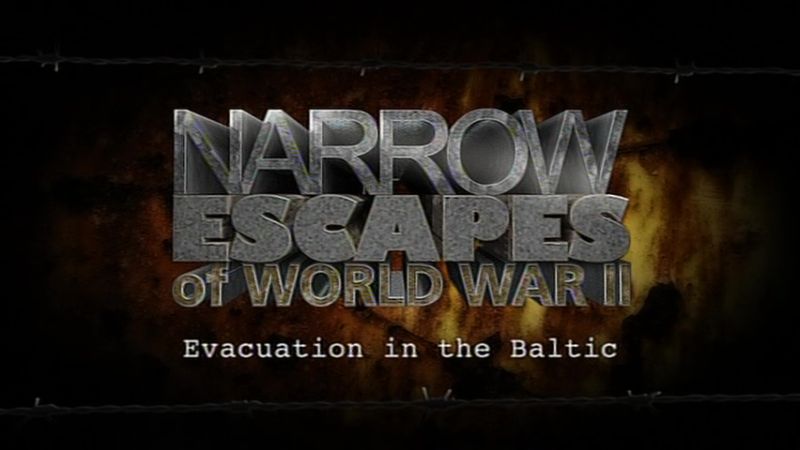Narrow Escapes of World War II episode 10: The largest evacuation of the Second World War saw two million civilians and soldiers taken away in an extraordinary German operation that lasted for four months. As the war enters its final months, the nearly 2 million Germans living in East Prussia flee an advancing Red Army no longer distinguishing between German soldiers and German civilians. Hundreds of thousands make for the Baltic ports the start of the single biggest evacuation of WWII. In early 1945 nearly two million people were trapped in the German enclave of East Prussia by the advancing Red Army. The Russians had an appalling reputation for rape, pillage and murder.
Told through the eyes of two of the survivors, Operation Hannibal, five times bigger than Dunkirk. Yet, outside Germany, it’s almost unknown. It was the biggest evacuation of World War Two three times bigger than Dunkirk. Over 2 million civilian and soldiers soldiers were spirited away from under the noses of the Red Army and the Royal Navy in an extraordinary German operation. It lasted for over four months, finishing on the very last day of the war. This film contains the deeply moving memories of Horst Woit, who was then just ten years old and who survived the worst maritime disaster in history when the ship taking him to Germany was torpedoed.
Narrow Escapes of World War II tells the real stories of courageous and deadly fights against impossible odds. The extraordinary stories of heroes; men who stand up and fight when everything seems lost. Those brilliant generals, ferocious warriors and individual acts of courage that can turn the tide in a war, and whose stories can still be told as shining examples of bravery and courage. This series combines eyewitness and expert testimony with specially shot material, dramatic reconstruction and archive much of it previously unseen.
Revisit some of the most daring missions of World War II as recounted by leading historians, military experts, and occasionally by the participants themselves. These 13 gripping episodes feature operations that took place all over the world—from the jungles of Southeast Asia to the steppes of southern Russia, from the foothills of the Himalayas to the frozen waters of the Baltic and the skies over Nazi-occupied France. With the benefit of original film footage, informative maps, and dramatic recreations, Narrow Escapes tells stories of valor, suffering, dedication, and determination—exploits of bravery that helped shape the outcome of the Second World War and continue to inspire today.
Narrow Escapes of World War II episode 10
Operation Hannibal was a massive naval operation conducted by the German Navy during World War II. The mission aimed to evacuate German soldiers and civilians from East Prussia before the advancing Soviet Army could capture them. In this article, we’ll explore the details of Operation Hannibal and its significance in World War II history.
To begin with, Operation Hannibal was one of the largest evacuation operations in history, involving over a million people. It was launched in January 1945 when the Red Army was closing in on East Prussia, and the German command feared that the civilians and troops there would be cut off and trapped. The operation involved a large fleet of ships, including warships, cargo vessels, and passenger liners, all tasked with transporting people and supplies across the Baltic Sea.
Furthermore, Operation Hannibal was not without its challenges. The ships had to navigate through minefields, avoid enemy submarines and aircraft, and face harsh weather conditions. Despite these difficulties, the operation was successful in evacuating around 900,000 people, including 350,000 civilians and 550,000 soldiers.
Moreover, the significance of Operation Hannibal in World War II history cannot be overstated. The operation allowed the Germans to preserve their fighting force, which was needed to defend against the Soviet Army’s advance. It also prevented the Red Army from capturing a large number of German prisoners, which could have prolonged the war. Operation Hannibal was a testament to the German Navy’s organizational skills and resourcefulness and demonstrated the importance of naval power in war.
Operation Hannibal was a pivotal moment in World War II, and its success ensured that the German forces would remain intact and continue to fight. Despite the challenges faced by the German Navy during the operation, they were able to evacuate a significant number of civilians and soldiers safely. It is a reminder of the importance of naval power and strategic planning in times of war.




